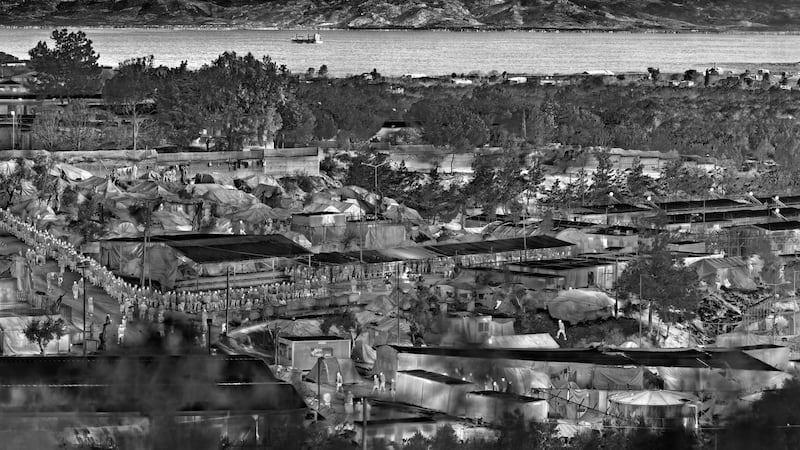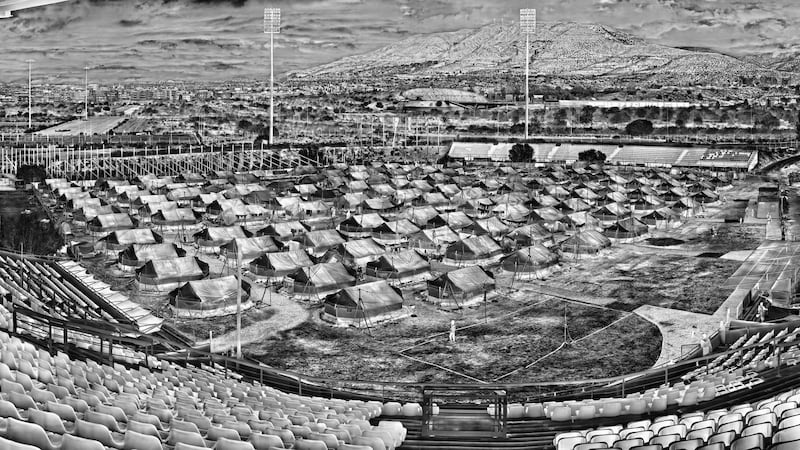Irish photographer Richard Mosse has won the Prix Pictet, one of the most prestigious photography prizes in the world.
The award was announced by Ex-UN secretary-general Kofi Annan.
Established in 2008 by the Pictet Group, one of the largest private banks in Switzerland, the Prix Pictet, which is worth 100,000 Swiss Francs (€92,000), has the overall theme of sustainability.
Within that overall theme, a specific subject is nominated. This year the subject is Space. Worldwide, 300 people nominate photographers for the award and a judging panel, currently numbering eight, selects a shortlist and a winner.
Mosse intended that the technology should rehumanise the people it was, in a sense, designed to dehumanise
Mosse won for his project Heat Maps, in which he used a thermographic camera, designed to monitor and control borders and other perimeters, to record images of camps and staging posts occupied by refugees and migrants.
Ghostly presences
The camera sees heat, so people become glowing, perhaps ghostly presences, standing out against eerily dark spaces.
Mosse intended that the technology should rehumanise the people it was, in a sense, designed to dehumanise, “the tens of millions of refugees and migrants (who) currently find themselves in limbo, excluded from participating or contributing to our modern societies”.

In his previous work, Mosse had used Kodak Aerochrome, a discontinued infrared film, to create images in the conflict zone between the Congolese army and rebel factions in the country.
The film transformed the lush green Congo vegetation into surreal, glowing pinks, reds and yellows.
We are uneasily aware of the images' troubling, invasive, surveillance nature, while prompted to deal with the humanity of those ghostly presences
For Heat Maps (commissioned by the Barbican Art Gallery, London and NGV Melbourne) he again turned to an unorthodox medium, acquiring an extreme tele military grade thermographic camera, designed for surveillance and effective up to 50km - it is regarded as a weapons system component and its export is governed by arms regulations.
Biological traces
Instead of employing it as an instrument of control and regulation, however, he set about subverting those uses, noting that it sees human beings as warm, biological traces rather than registering, say, skin colour.

We are uneasily aware of the images’ troubling, invasive, surveillance nature, while prompted to deal with the humanity of those ghostly presences.
Born in 1980, Mosse studied at Goldsmiths in London and at Yale University, where he completed an MFA in photography in 2008.
He represented Ireland at the Venice Biennale in 2013 with a video, The Enclave, again using Kodak Aerochrome in exploring rebel groups in Congo. He went on to win another important award, the Deutsche Boerse Photography Prize, in 2014.
He was chosen from a shortlist of 12 that included such formidable contenders as Germans Thomas Ruff, Beate Guetschow, Saskia Groneberg and Michael Wolf, Russians Pavel Wolbeg and Sergey Ponomarev, Bengali Munem Wasif, Canadian Benny Lam, Mandy Barker from the UK and, from Japan, Rinko Kawauchi and Sohei Nishino, whose extraordinary Diorama Maps have won him international acclaim.
The eight-strong judging panel includes renowned environmental photographer Sebastião Salgado, V&A photography curator Martin Barnes, FT arts editor Jan Dalley and architect Wang Shu.












